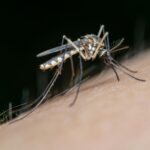BaroPace Receives Approval for First-in-Human Clinical Trial

SAMMAMISH, Wash. — BaroPace, Inc., a medical technology company dedicated to using blood pressure to regulate pacemakers for patients with heart failure with preserved ejection fraction and hypertension, announced today that it has received approval from the Central Drugs Standard Control Organisation (CDSCO) of India to conduct its clinical trial RelieveHFpEF-II in India.
RelieveHFpEF-II is a randomized, cross-over design, First-in-Human, Early Feasibility Study using the Company’s patent-pending real-time closed loop system, PressurePace, to regulate a cardiac pacemaker with the aim of improving exercise tolerance, sense of well-being, and blood pressure control for patients with heart failure with preserved ejection fraction (HFpEF) associated with hypertension, the most common form of heart failure. RelieveHFpEF-II represents a number of potential firsts, including studying: the first real-time closed loop pacemaker regulation system based upon blood pressure input, the capability for real-time patient interaction with the closed loop to optimize treatment, and demonstration of the safety and efficacy of real-time remote pacemaker programming. First patient enrollment is expected July 2023.
“The relationship between heart rate and blood pressure has been known for 200 years but, until now, pacemakers have been blind to it and other important physiologic parameters,” said Michael Burnam MD, founder and CEO of BaroPace. “The ability to regulate pacemakers in real-time based on blood pressure and the patient’s real-time, symptom-based input could usher in a new age of automated implantable cardiac device control.”
Michael Coyle, board member of BaroPace and long-time senior executive in the Global Cardiac Rhythm Management Industry said, “What is intuitively appealing about the BaroPace method of cardiac pacing is its use of the patient’s own hemodynamics to optimize pacemaker rate settings. This is very novel compared to the way pacing rates have been programmed previously.”
Last Updated on 1 year by Middle East News 247












